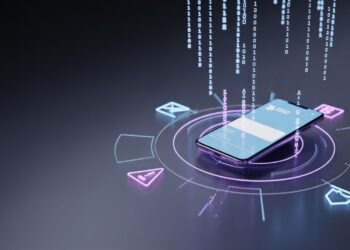If your laptop’s power button is broken, or if you simply can’t get it to work, you might be in a bit of a bind. A malfunctioning power button can be frustrating, but don’t worry – there are ways to turn on your laptop without needing to press that button. In this article, we’ll explore various methods to power on your laptop, offering a solution no matter what the problem might be.
1. Using the Keyboard (for Laptops with This Feature)
Many modern laptops come with a feature in the BIOS/UEFI settings that allows the device to power on via the keyboard. This can be especially useful if your power button is unresponsive. Here’s how you can enable this feature and turn your laptop on using the keyboard:
- Enter the BIOS/UEFI settings:
- Restart your laptop and press the appropriate key to enter the BIOS/UEFI settings (usually F2, F10, or Delete).
- Enable Keyboard Wake-Up:
- Look for a setting related to “Power Management” or “Advanced Settings.”
- Find the option that enables you to turn on the laptop using the keyboard (commonly called “Wake on Keyboard” or similar).
- Enable this option and save the changes.
- Test the Keyboard:
- After enabling the setting, turn off your laptop completely and press any key on the keyboard. Your laptop should power on.
Pros: It’s a simple solution that doesn’t require extra tools or hardware.
Cons: Not all laptops support this feature, and it might not work if the laptop is entirely unresponsive.
2. Using the Lid (for Laptops with This Feature)
Another handy option is to use your laptop’s lid to power it on automatically. Some laptops have a feature that allows the laptop to turn on when you open the lid. If this feature is enabled in your laptop’s BIOS/UEFI settings, you can bypass the power button entirely.
- Access the BIOS/UEFI:
- Restart your laptop and press the necessary key (usually F2, F10, or Delete) to enter BIOS/UEFI.
- Enable Lid Power-On:
- Look for an option called “Power on Lid Open” or something similar under the Power Management section.
- Enable this setting.
- Test the Lid:
- Close the laptop, and then open the lid. If the feature is enabled, the laptop should automatically turn on.
Pros: Very convenient, especially if you often forget to press the power button.
Cons: This feature may not be available on all laptops, and it may be disabled by default.
3. Charging Cable Trick
In some cases, connecting your laptop to its charging cable might trigger it to power on automatically. This is especially common in models designed to start up when plugged in. Here’s how you can try this method:
- Plug in the Charger:
- Insert the charging cable into your laptop and plug the other end into a power outlet.
- Wait for the Laptop to Power On:
- Some laptops will automatically power on when they detect power from the charger.
Pros: It’s a quick, simple solution with no configuration required.
Cons: This won’t work if your laptop doesn’t support this feature, and it may only work when the laptop’s battery is depleted.
4. External Power Button (Using USB or Docking Station)
If you have a USB-based docking station or an external device with a power button feature, you may be able to use this to turn on your laptop. Many docking stations and some external hubs come with a power button that can start the laptop when connected.
- Connect the Docking Station:
- Attach your laptop to the docking station (ensure that it has a power button).
- Press the Power Button:
- Press the power button on the docking station, and your laptop should power on.
Pros: This solution is great for people who already have a docking station.
Cons: You’ll need to have an appropriate docking station, and this method may not work with all laptop models.
5. Short-Circuiting the Power Button (Advanced Method)
For those comfortable with more technical solutions, you might be able to “short-circuit” the power button connection to turn on your laptop. This method requires knowledge of your laptop’s internal components, and it’s recommended only if you are experienced with hardware.
- Open the Laptop:
- Carefully open your laptop’s casing (refer to your manufacturer’s manual for the proper way to do this).
- Locate the Power Button Connection:
- Find the power button connection on the motherboard.
- Short-Circuit the Pins:
- Use a small tool, such as a flathead screwdriver, to short the pins that connect the power button to the motherboard. This will simulate pressing the power button.
Pros: Can be a quick solution if you’re comfortable with hardware and need immediate access to your laptop.
Cons: Risky and can damage your laptop if done incorrectly. Proceed with caution!
6. Software Solutions for Wake-on-LAN (if Applicable)
If your laptop is connected to a network and has Wake-on-LAN (WoL) enabled, you can turn it on remotely. This method works by sending a “magic packet” from another computer or device on the same network to trigger the laptop to power on.
- Enable Wake-on-LAN in BIOS:
- Access the BIOS/UEFI and enable Wake-on-LAN under the “Power Management” section.
- Set up WoL on a Remote Device:
- Install WoL software on another device on the same network (such as another PC or smartphone).
- Send the Magic Packet:
- Use the WoL software to send a magic packet to the laptop’s network adapter, which will power it on.
Pros: Ideal for people who need to access their laptop remotely.
Cons: Requires network configuration and may not be available on all devices.
Conclusion
In this article, we’ve covered several ways to turn on a laptop without the power button. Whether you’re using the keyboard, a docking station, or even short-circuiting the power button itself, there’s a solution for almost every scenario. If none of these methods work or if you’re uncomfortable with any of them, it might be time to have your laptop’s power button repaired by a professional.
Remember, prevention is always better than cure. To avoid hardware failures in the future, treat your laptop with care, keep it clean, and consider using surge protectors to prevent electrical damage.
Have you tried any of these methods? Let us know which worked for you!





